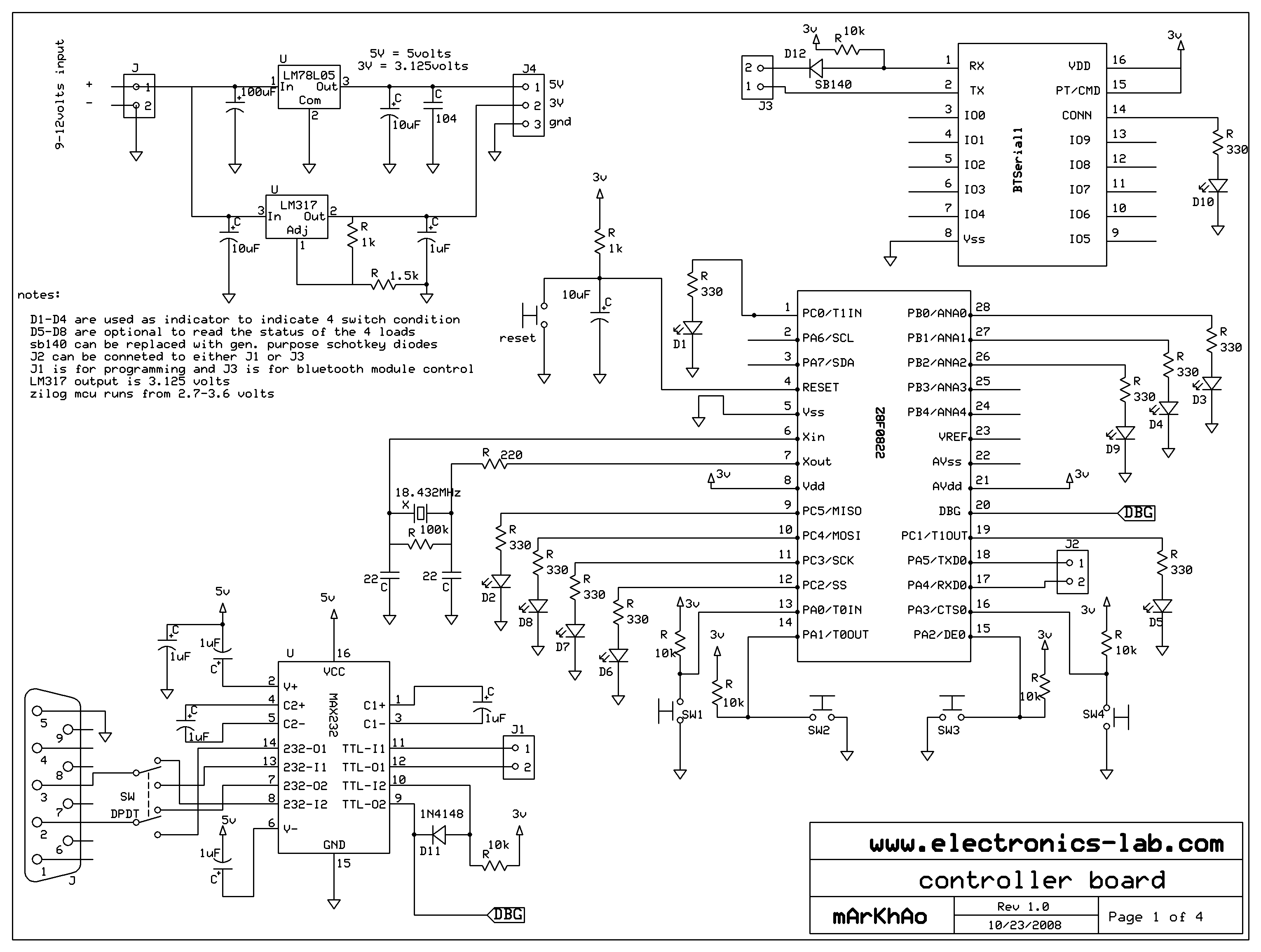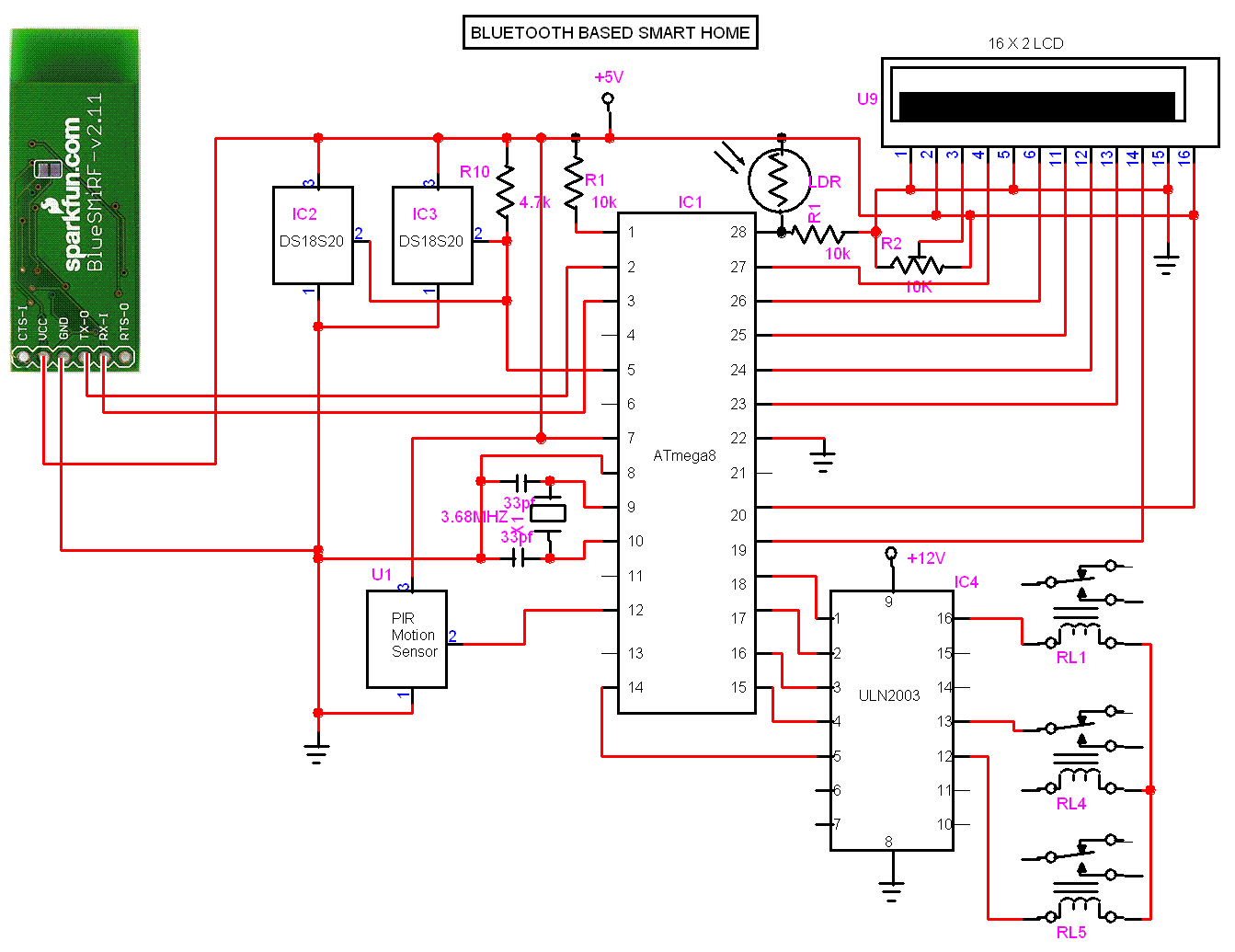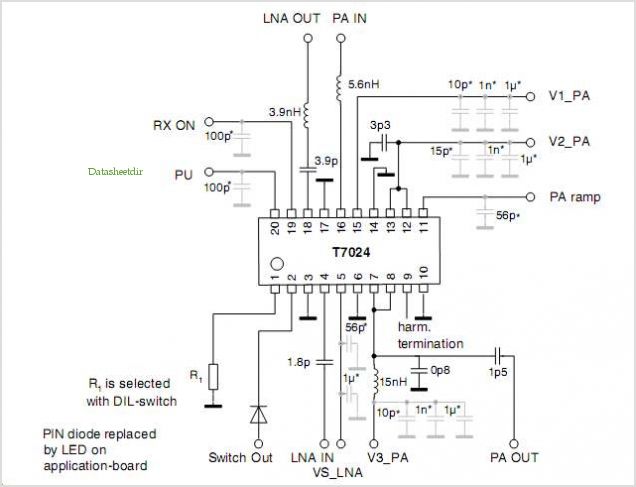
BlueTooth Ericofon

It would be impressive to sit at a favorite coffee shop with an Ericofon on the table. While chatting with friends, the phone rings, and upon picking it up, one hears a dial tone and uses the rotary dial to call home. This project is about retrofitting an extraordinary phone to create a unique and functional conversation piece. The idea originated from reading about the Port-o-Rotary phone, where SparkFun converted a standard rotary dial telephone to make cellular calls. The plan is to develop an open-source retrofit kit for a portable phone that enhances the original concept. The Ericofon was chosen as the showcase for this project. After researching where to obtain an Ericofon, contact was made with Richard Rose, the owner of a website specializing in classic telephones. He provided insight into the spatial constraints within the phone and mentioned that maintaining rotary dialing might be challenging. The response to his caution was an enthusiastic commitment to the project. Richard's website offers an extensive collection of classic phones and valuable maintenance information. The Ericofon is compact and lacks room for additional components, utilizing an internal buzzer for ringing in Swedish versions and an electronic wobbler called Ericotone in American versions. The Ericotone produces ringing sounds by modulating the earphone. The internal design of the phone is intricate, and original schematic diagrams are available for reference. The retrofit will incorporate the BlueGiga Bluetooth module WT32, which supports the HFP protocol for Bluetooth connectivity. This module includes features such as analog inputs and outputs, a programmable current and voltage source for an electret microphone, a Bluetooth antenna, and battery management for Lithium Polymer batteries. The goal of the retrofit is to preserve the phone's original appearance with minimal modifications. A Microchip PIC 16F688 microcontroller will be used for the retrofit circuit, programmed in C with the CCS compiler. Future enhancements may include user-programmable volume levels and additional features controlled by the rotary dial. To replicate the Ericotone's sound, wobble frequencies were determined using an original recording and a frequency generator. An oscilloscope was used to analyze the signal, and an RC circuit was developed to smooth the output. Although a differential OP amplifier could have been employed, the decision was made to isolate the unbalanced ring signal from the WT32's balanced output. The schematic and PCBs were designed using Eagle software, and the final PCB measures only 2"x1.5" (5x3.8 cm). The schematic, PCB, and software files will be made available for download soon.
The project aims to create a functional and aesthetically pleasing retrofitted Ericofon that integrates modern technology while preserving the classic design. The use of the BlueGiga WT32 Bluetooth module allows for seamless connectivity to mobile devices, enabling users to make and receive calls wirelessly. The choice of the Microchip PIC 16F688 microcontroller provides a robust platform for implementing the necessary control logic and interfacing with the Bluetooth module.
The design process involves careful consideration of the limited internal space within the Ericofon. The compact PCB layout is critical to ensure all components fit within the constraints of the phone's shell. The integration of the rotary dial as an input method is a significant aspect of the project, allowing users to interact with the device in a familiar manner. The development of user-programmable features, such as volume control, adds an additional layer of functionality that enhances the user experience.
Sound reproduction is a key focus, with efforts made to accurately replicate the original Ericotone's ringing sound. The use of an oscilloscope to analyze the waveform and amplitude of the generated tones ensures that the output closely matches the desired audio characteristics. The decision to isolate the signals rather than using a differential amplifier simplifies the design and reduces the potential for signal interference.
Overall, this project represents a blend of classic design and modern technology, showcasing the potential of retrofitting traditional devices with contemporary features. The open-source nature of the retrofit kit encourages collaboration and innovation within the community, allowing others to contribute ideas and improvements. The final deliverables, including schematic diagrams, PCB designs, and software, will provide a comprehensive resource for enthusiasts interested in replicating or building upon this project.Wouldn`t be cool sitting at your favorite coffee shop with this phone on the table, and while chatting with your friends the Ericofon rings and it is a call for you Or picking it up, hearing a dial tone, cranking up the rotary dial and dialing home to say that you will be soon in your way Well, this is what this is about. This is an open source project on how to retrofit an extraordinary phone to make it a special, functional piece of conversation. Literally. The idea started when several months ago when I read about the Port-o-Rotary phone. The cool guys from SparkFun converted an ordinary rotary dial telephone into a telephone that can make cellular phone calls.
My plan is to come up with a retrofit kit (open source) for a cool phone that is easy to carry, and adding some nice features to the original idea. And what better to show off the project than an Ericofon. After doing some research on the internet about where to get an Ericofon, I found this amazing site. I contacted the owner, Richard Rose and told him about what I was planning to do. He promptly sent me a very nice email explaining how tight it is in there and how quickly I will run into space problems.
He also said:"You`re not the first to think of this, although I`ve never heard of anyone actually going through with the idea. I`ve been inside these phones for a while and I don`t see being able to maintain rotary dialing with the design you have in mind.
"I emailed him back: "You just dared my inner engineer and geek! Game on!" Certainly, there are many places where you can get Ericofons, specially eBay. However, if you really want to get an excellent phone, probably NOS (new old stock), try first Richard`s website. His website has an amazing collection of these and other sort of classic telephones. He has been a phone collector since 1990. What impressed me most is his knowledge about these phones. His website has tons of great, detailed information about how to fix and maintain the phones and other useful and interesting information.
If you really appreciate this classic phone and want to get one, I seriously recommend to contact him first. Richard was right. These phones are very dense and don`t have room for much inside. They don`t even have a ring bell. The Swedish phones use an internal buzzer ( here its sound) and theAmerican phones use an electronic wobbler called Ericotone.
The Ericotone is placed inside the neck of the shell and the ring noise is produced modulating the earphone( here its sound). If you ever wondered how the designers crammed all the circuitry and a rotary dial inside the little shell, you can see what is inside mine (click on the pics to see the details).
Here are the original schematic diagrams (posted on of the phone without ringer, with ringer (Ericotone) and seeing from the Ericotone perspective (click to enlarge). I decided to use the BlueGiga Bluetooth module WT32. This module packs a lot of features in a very small package. It supports the required HFP protocol to interface via Bluetooth to cell phones and some of its neat features include analog input and output (for voice), programmable current and voltage source for an electret microphone, Bluetooth antenna and a battery charger/management for Lithium Polymer (LiPo) batteries.
The WT32 interfaces include USB, SPI and serial asynchronous (UART) protocols. The goal of this retrofit was to keep the phone as original as possible with minimum modifications. I am very familiar with Microchip PICs, so I decided to build the retrofit circuit around the 16F688 micro-controller and programming in C using the CCS compiler. Other features may be added later, such as user programmable volume levels and other features using the rotary dial.
Suggestions are welcome! Post your wish list! In order to mimic the Ericotone, first I needed to determine the wobble frequencies. I used the original. wav recording on Richard`s page and an Agilent 33120A frequency generator applying the tones to the original earphone. I checked the amplitude and waveform of the applied signal with an oscilloscope and played with an RC circuit to smooth the signal and get an acceptable, similar tone effect.
Although I could have used a differential OP amplifier adder to provide the tones and voice to the earphone, I decided to isolate the unbalanced ring signal from the balanced output signal from the WT32. I designed the schematic and the PCBs using Eagle software. Note that I really didn`t have too much space to cram all inside the Ericofon, so the final printed circuit board (PCB) is only 2"x1.
5" (5x3. 8 cms)!. Here are the printed circuit board designs. I will post the schematic, PCB and software Eagle files for download soon. Both Layers Top Layer Bottom Layer 🔗 External reference
The project aims to create a functional and aesthetically pleasing retrofitted Ericofon that integrates modern technology while preserving the classic design. The use of the BlueGiga WT32 Bluetooth module allows for seamless connectivity to mobile devices, enabling users to make and receive calls wirelessly. The choice of the Microchip PIC 16F688 microcontroller provides a robust platform for implementing the necessary control logic and interfacing with the Bluetooth module.
The design process involves careful consideration of the limited internal space within the Ericofon. The compact PCB layout is critical to ensure all components fit within the constraints of the phone's shell. The integration of the rotary dial as an input method is a significant aspect of the project, allowing users to interact with the device in a familiar manner. The development of user-programmable features, such as volume control, adds an additional layer of functionality that enhances the user experience.
Sound reproduction is a key focus, with efforts made to accurately replicate the original Ericotone's ringing sound. The use of an oscilloscope to analyze the waveform and amplitude of the generated tones ensures that the output closely matches the desired audio characteristics. The decision to isolate the signals rather than using a differential amplifier simplifies the design and reduces the potential for signal interference.
Overall, this project represents a blend of classic design and modern technology, showcasing the potential of retrofitting traditional devices with contemporary features. The open-source nature of the retrofit kit encourages collaboration and innovation within the community, allowing others to contribute ideas and improvements. The final deliverables, including schematic diagrams, PCB designs, and software, will provide a comprehensive resource for enthusiasts interested in replicating or building upon this project.Wouldn`t be cool sitting at your favorite coffee shop with this phone on the table, and while chatting with your friends the Ericofon rings and it is a call for you Or picking it up, hearing a dial tone, cranking up the rotary dial and dialing home to say that you will be soon in your way Well, this is what this is about. This is an open source project on how to retrofit an extraordinary phone to make it a special, functional piece of conversation. Literally. The idea started when several months ago when I read about the Port-o-Rotary phone. The cool guys from SparkFun converted an ordinary rotary dial telephone into a telephone that can make cellular phone calls.
My plan is to come up with a retrofit kit (open source) for a cool phone that is easy to carry, and adding some nice features to the original idea. And what better to show off the project than an Ericofon. After doing some research on the internet about where to get an Ericofon, I found this amazing site. I contacted the owner, Richard Rose and told him about what I was planning to do. He promptly sent me a very nice email explaining how tight it is in there and how quickly I will run into space problems.
He also said:"You`re not the first to think of this, although I`ve never heard of anyone actually going through with the idea. I`ve been inside these phones for a while and I don`t see being able to maintain rotary dialing with the design you have in mind.
"I emailed him back: "You just dared my inner engineer and geek! Game on!" Certainly, there are many places where you can get Ericofons, specially eBay. However, if you really want to get an excellent phone, probably NOS (new old stock), try first Richard`s website. His website has an amazing collection of these and other sort of classic telephones. He has been a phone collector since 1990. What impressed me most is his knowledge about these phones. His website has tons of great, detailed information about how to fix and maintain the phones and other useful and interesting information.
If you really appreciate this classic phone and want to get one, I seriously recommend to contact him first. Richard was right. These phones are very dense and don`t have room for much inside. They don`t even have a ring bell. The Swedish phones use an internal buzzer ( here its sound) and theAmerican phones use an electronic wobbler called Ericotone.
The Ericotone is placed inside the neck of the shell and the ring noise is produced modulating the earphone( here its sound). If you ever wondered how the designers crammed all the circuitry and a rotary dial inside the little shell, you can see what is inside mine (click on the pics to see the details).
Here are the original schematic diagrams (posted on of the phone without ringer, with ringer (Ericotone) and seeing from the Ericotone perspective (click to enlarge). I decided to use the BlueGiga Bluetooth module WT32. This module packs a lot of features in a very small package. It supports the required HFP protocol to interface via Bluetooth to cell phones and some of its neat features include analog input and output (for voice), programmable current and voltage source for an electret microphone, Bluetooth antenna and a battery charger/management for Lithium Polymer (LiPo) batteries.
The WT32 interfaces include USB, SPI and serial asynchronous (UART) protocols. The goal of this retrofit was to keep the phone as original as possible with minimum modifications. I am very familiar with Microchip PICs, so I decided to build the retrofit circuit around the 16F688 micro-controller and programming in C using the CCS compiler. Other features may be added later, such as user programmable volume levels and other features using the rotary dial.
Suggestions are welcome! Post your wish list! In order to mimic the Ericotone, first I needed to determine the wobble frequencies. I used the original. wav recording on Richard`s page and an Agilent 33120A frequency generator applying the tones to the original earphone. I checked the amplitude and waveform of the applied signal with an oscilloscope and played with an RC circuit to smooth the signal and get an acceptable, similar tone effect.
Although I could have used a differential OP amplifier adder to provide the tones and voice to the earphone, I decided to isolate the unbalanced ring signal from the balanced output signal from the WT32. I designed the schematic and the PCBs using Eagle software. Note that I really didn`t have too much space to cram all inside the Ericofon, so the final printed circuit board (PCB) is only 2"x1.
5" (5x3. 8 cms)!. Here are the printed circuit board designs. I will post the schematic, PCB and software Eagle files for download soon. Both Layers Top Layer Bottom Layer 🔗 External reference





